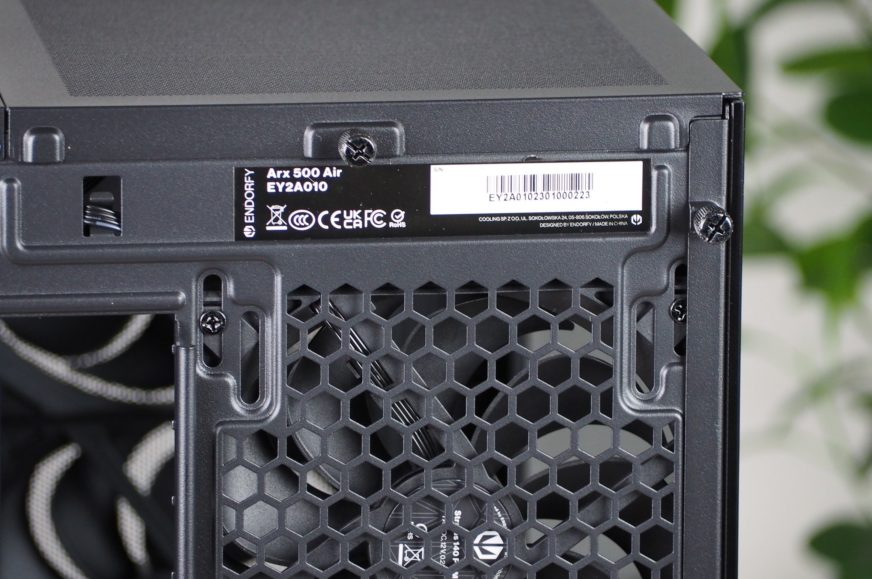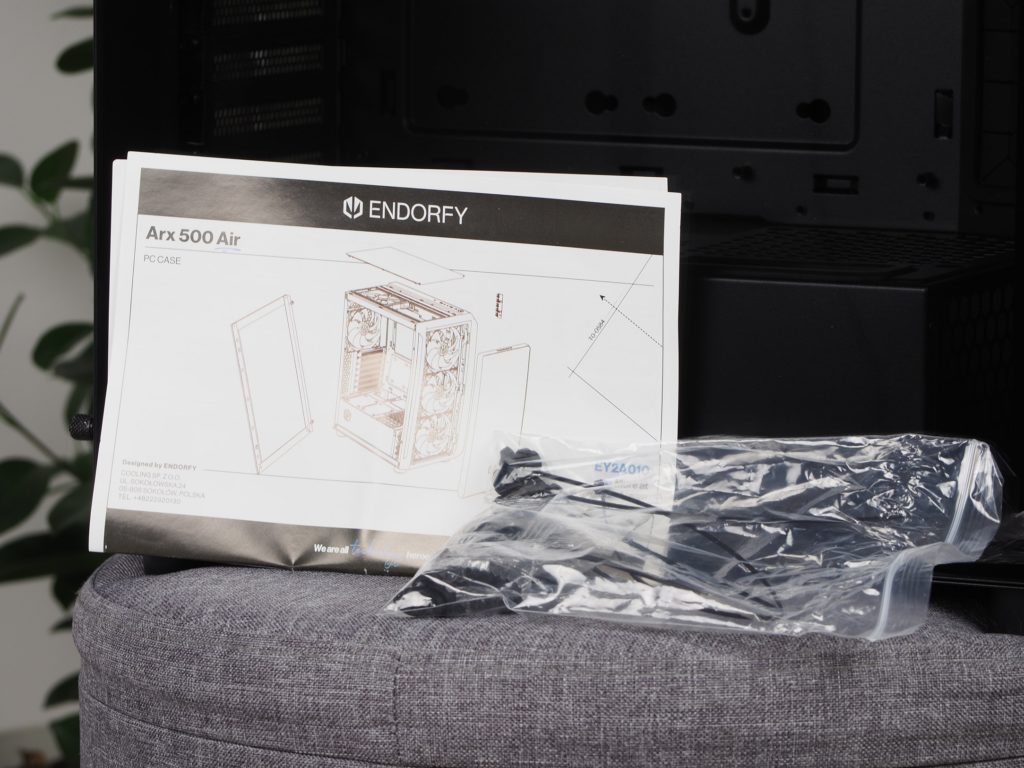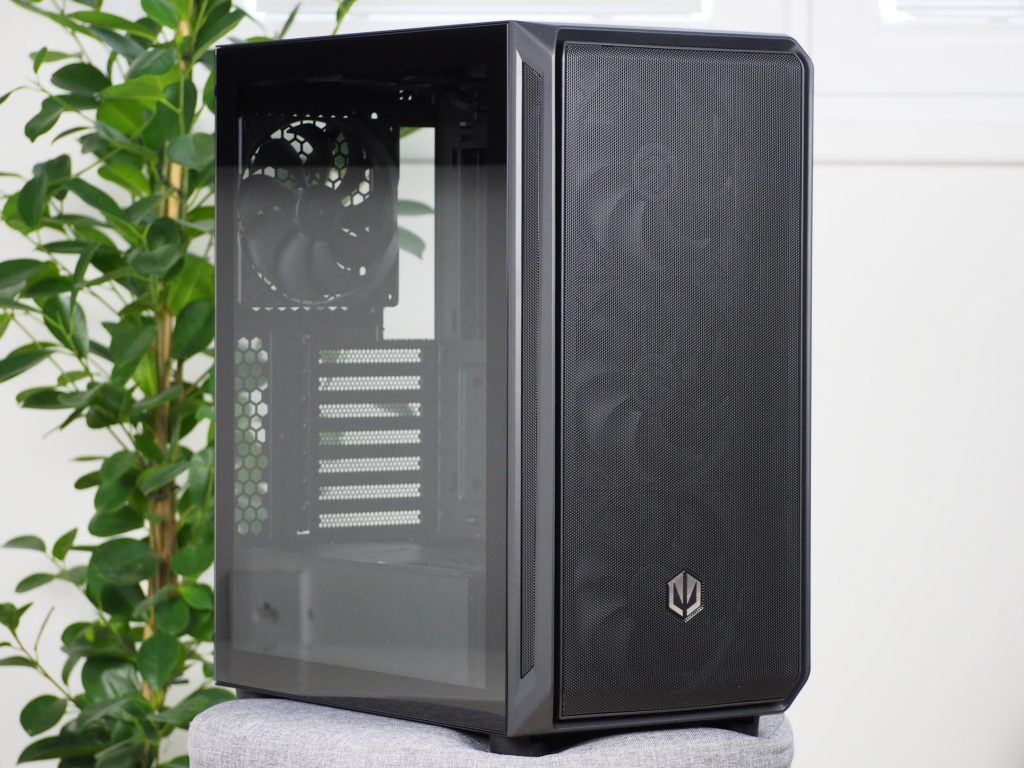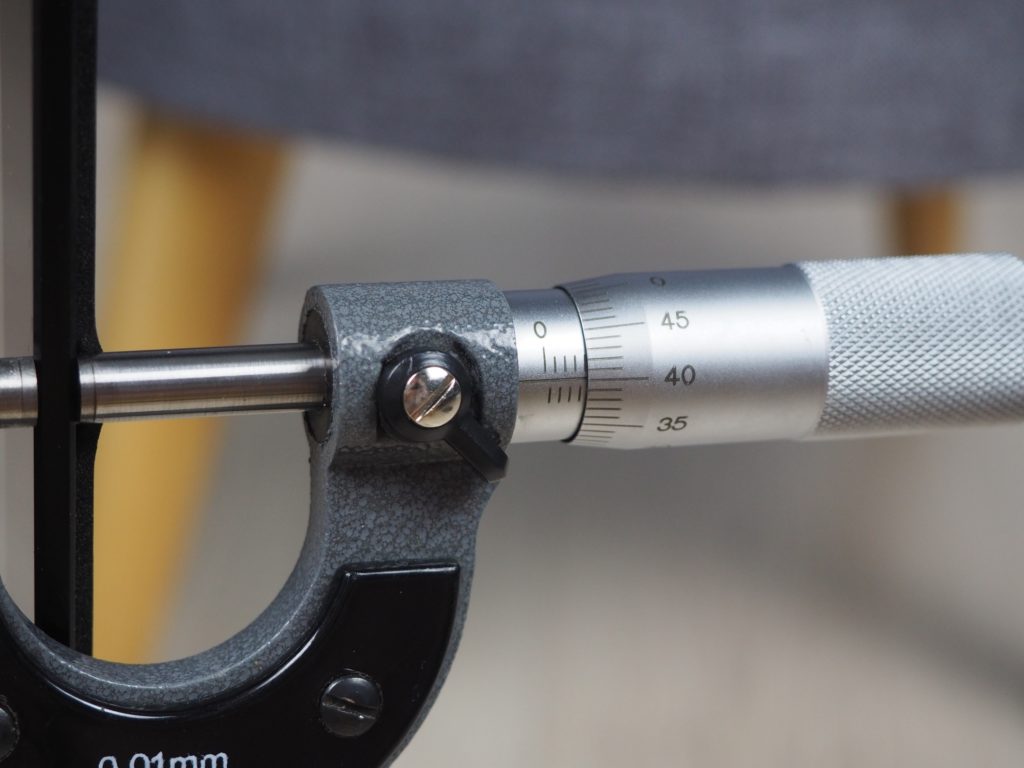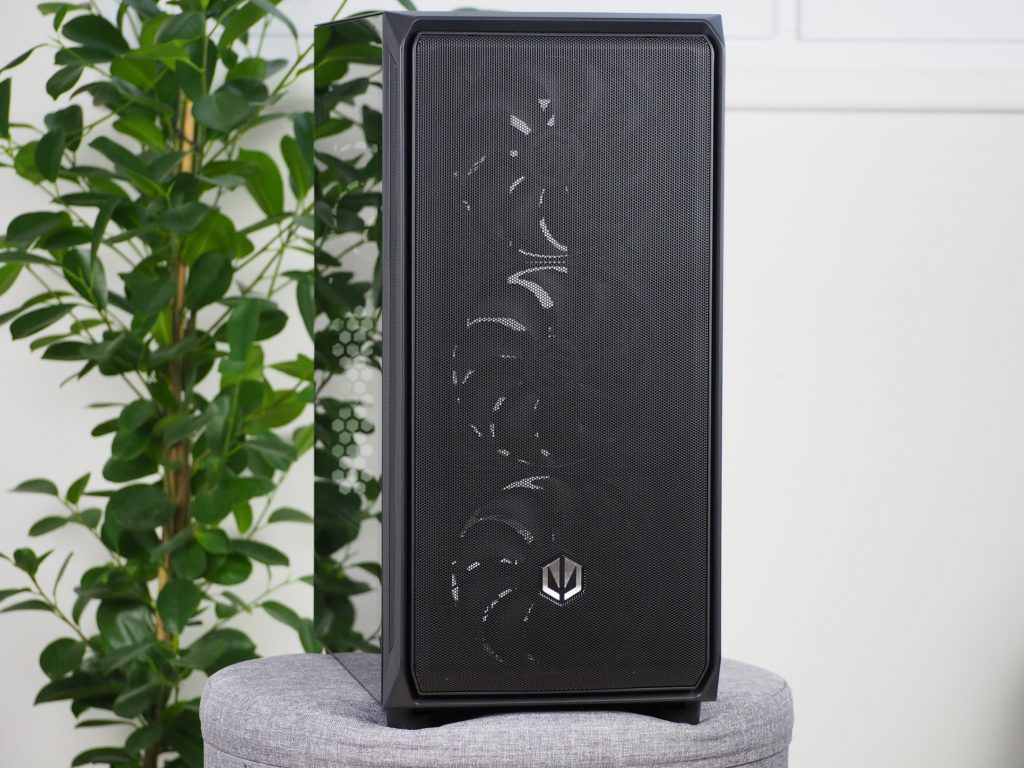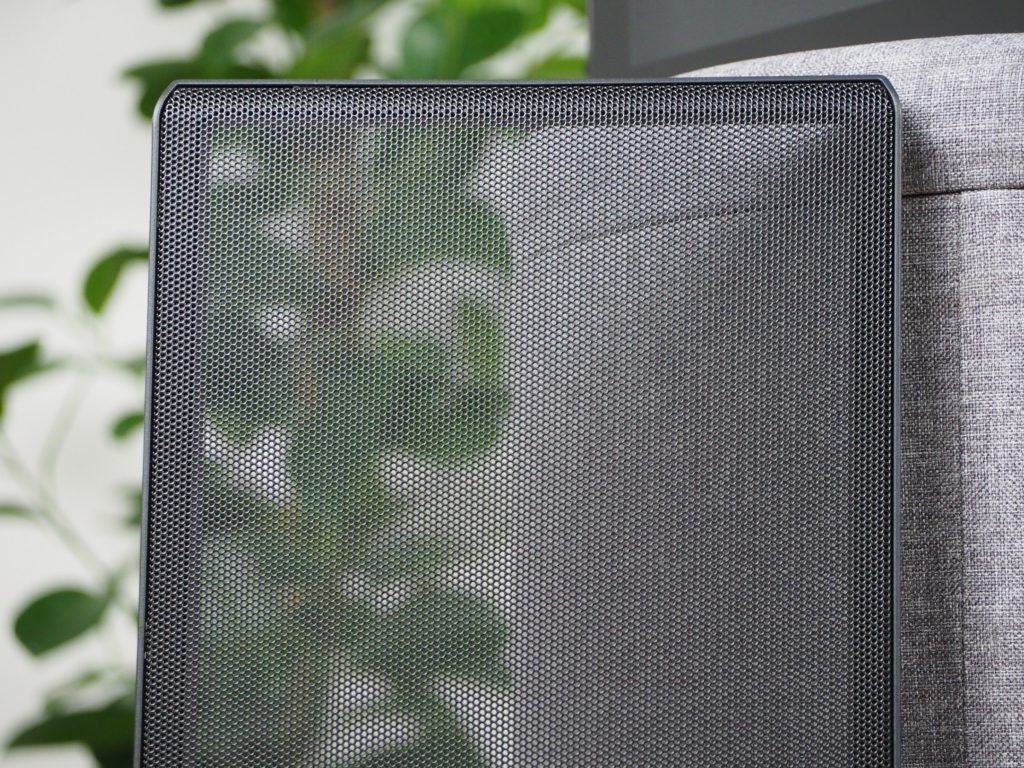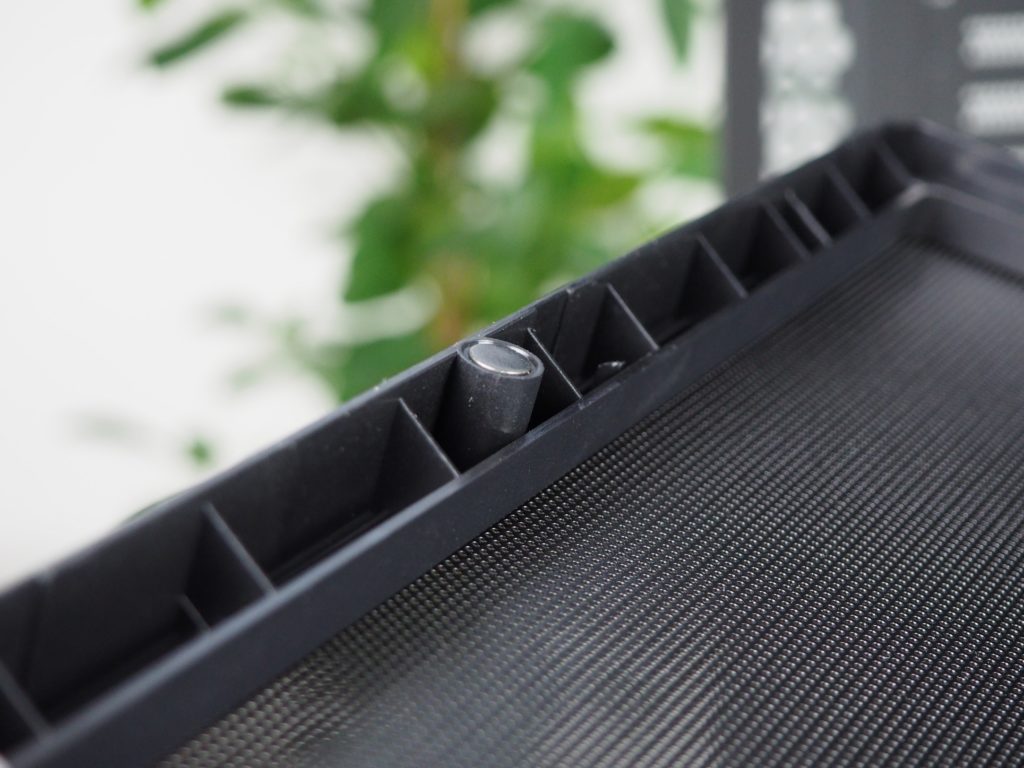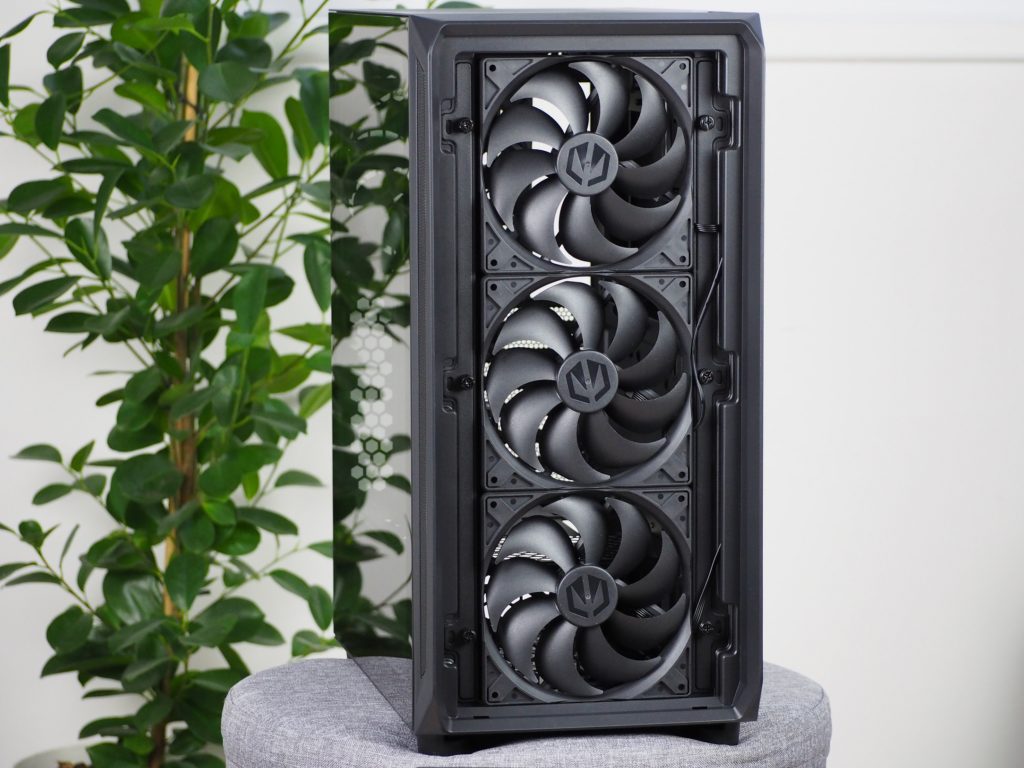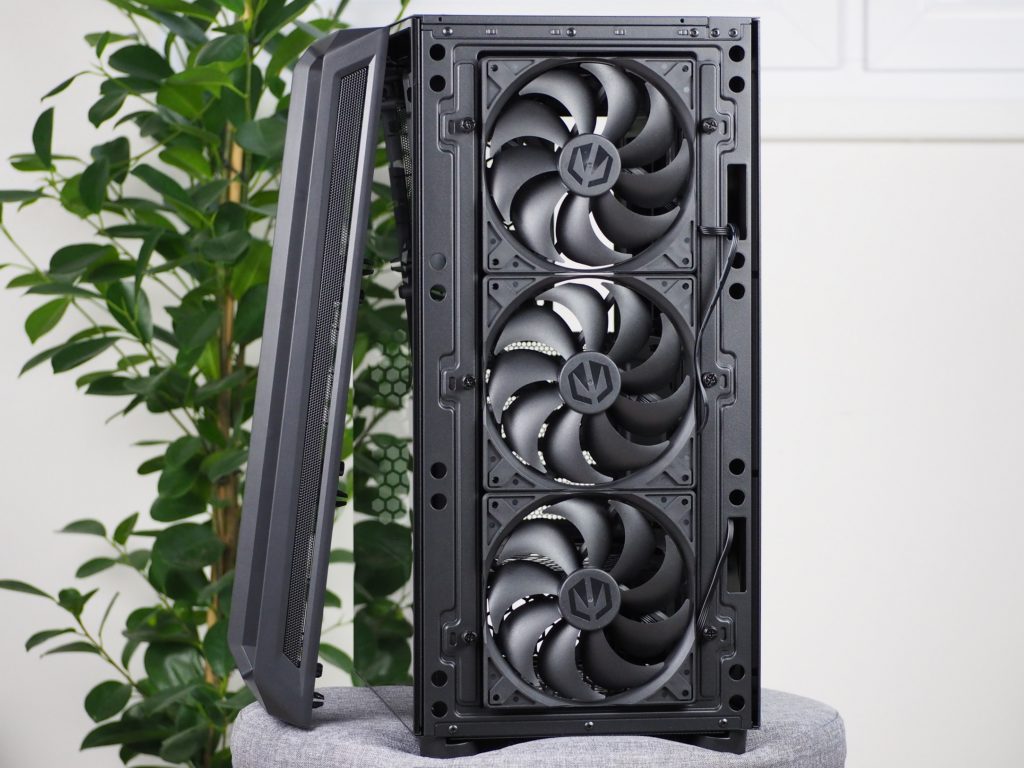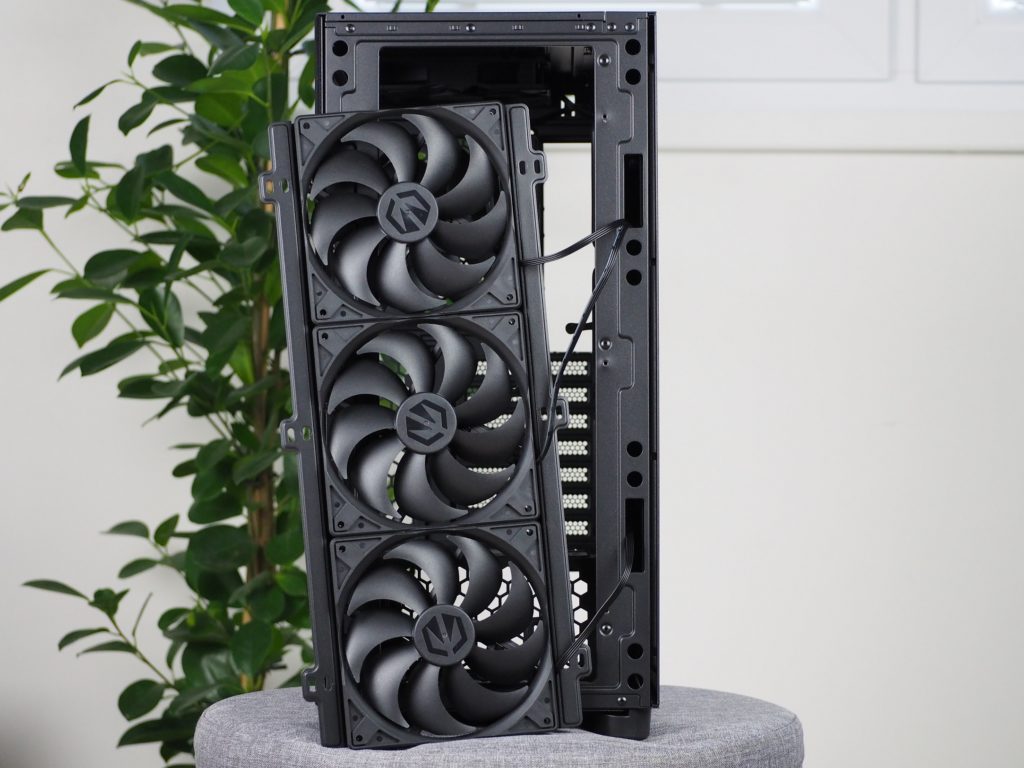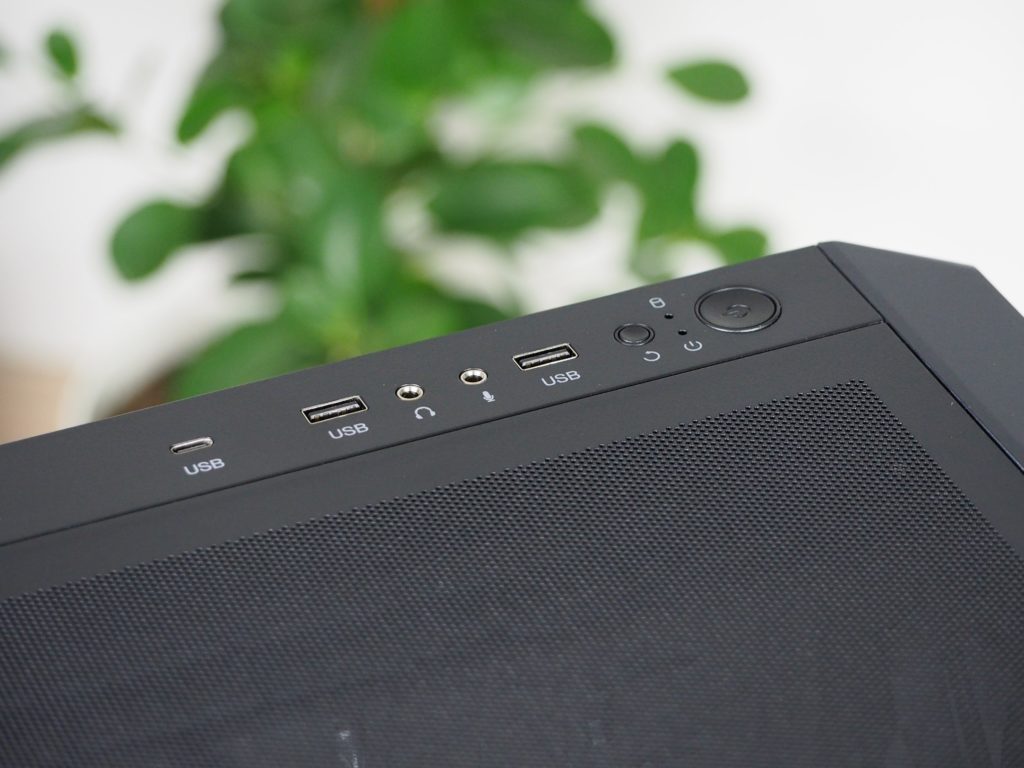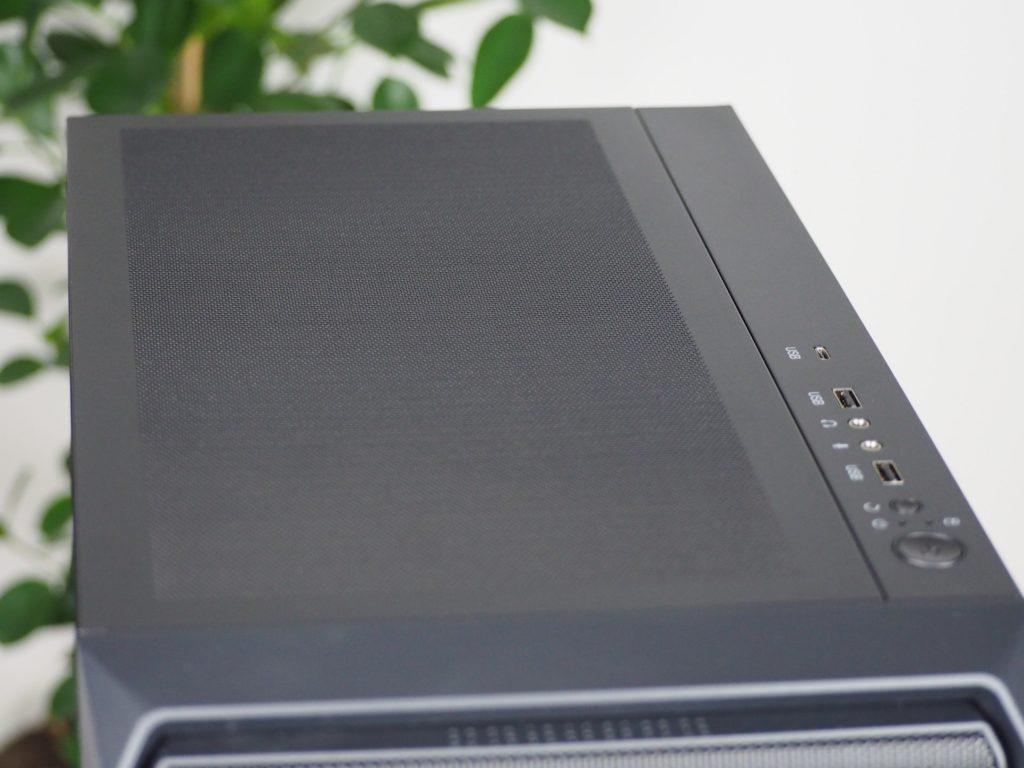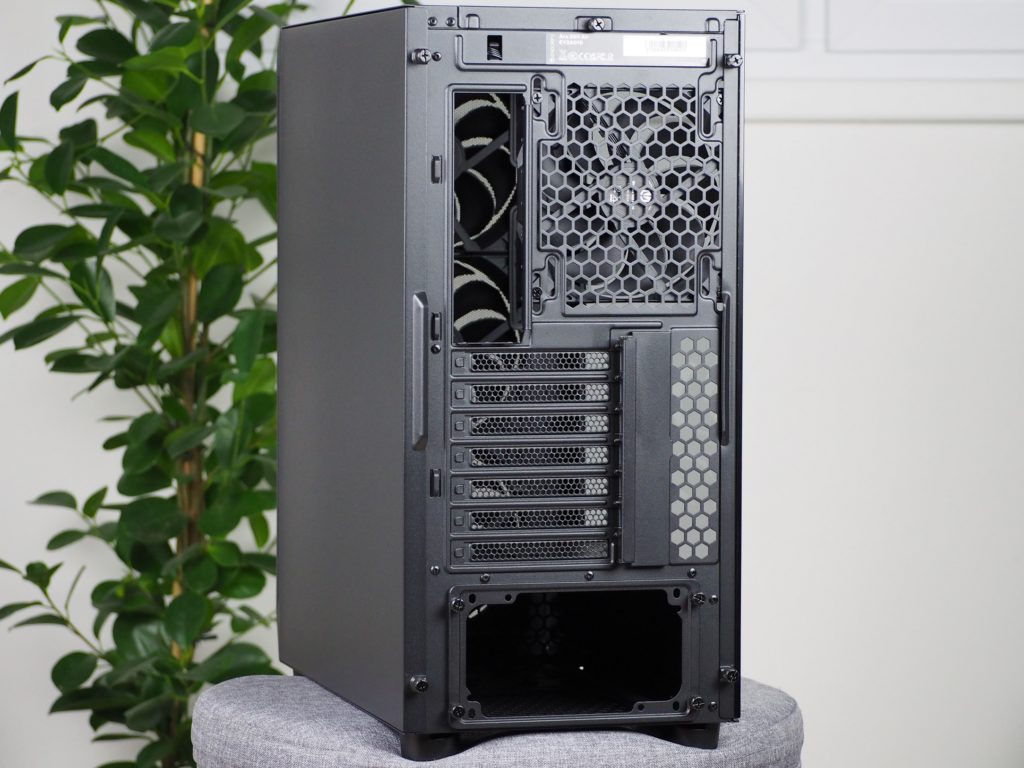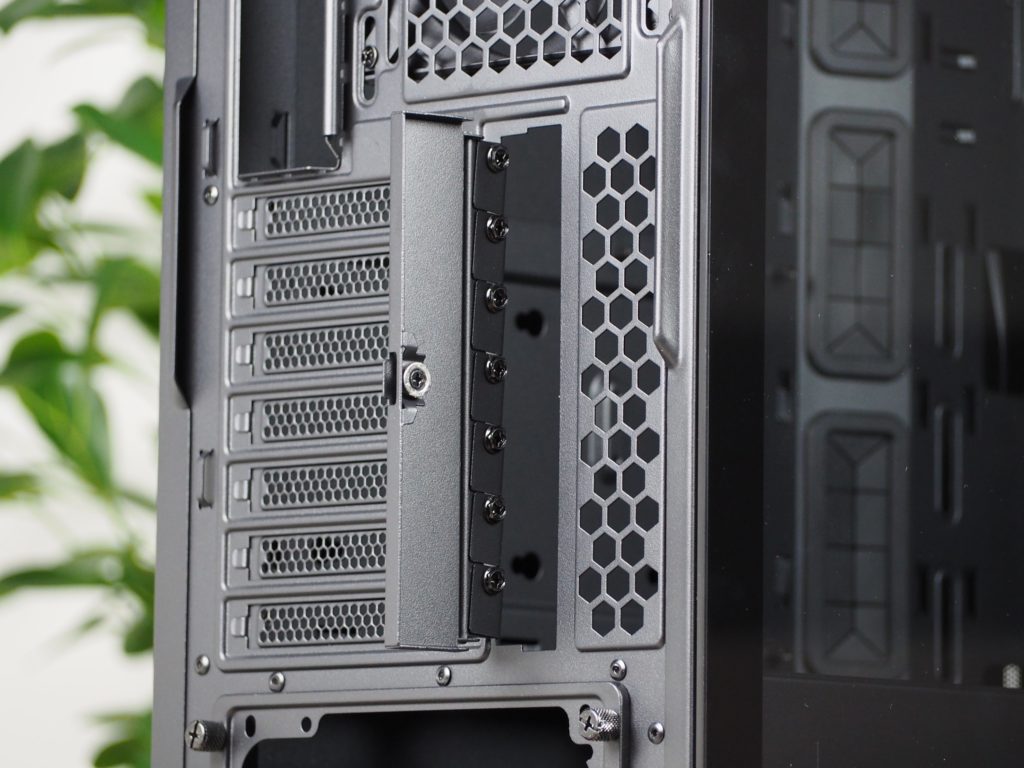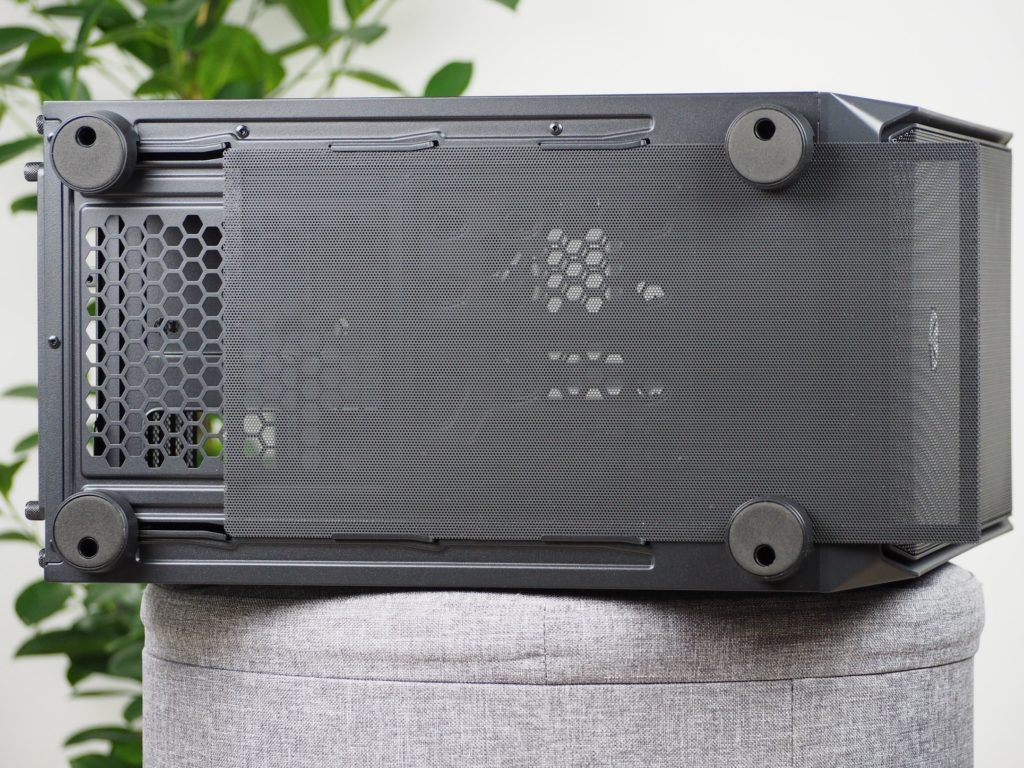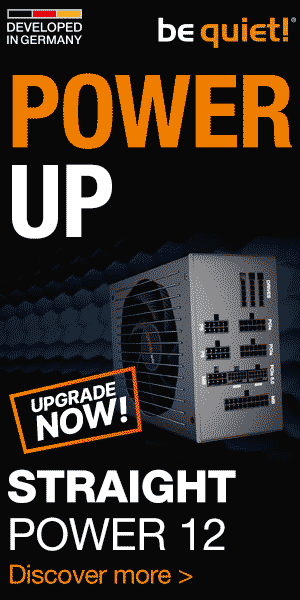Exterior
When something is “worth it” and it’s bigger than enough for some, making a smaller version is definitely a good idea. Something similar happened with the Arx 700 Air, from which the scaled-down Arx 500 Air was derived. It has taken all the good qualities and also the wider range of features of the original case. This includes, for example, five pre-installed 140mm fans. So there is no shortage of proper air circulation, and the only question is the noise level.
Basic parameters
| Parameters | Endorfy |
| Arx 500 Air | |
| Supported motherboard formats | Mini-ITX, mATX, ATX |
| Supported PSU format | ATX |
| CPU cooler | up to 179 mm |
| Graphics cards | up to 350 mm |
| Fan | 7× 120 mm/6× 140 mm (5× pre-installed) |
| Supported liquid radiators | 1× up to 280/360 mm + 1× up to 240/280 mm |
| 2,5" positions | 6 + 1 shared |
| 3,5" positions | 1 shared |
| 5,25" positions | 0 |
| Dimensions [H/D/W] (and volume) | 486 × 429 × 228 mm (48 l) |
| Weight | 7,6 kg |
| Materials | steel + plastic + tempered glass |
| Connectivity | 2× USB 3.2 gen. 1 type A + 1× USB 3.2 gen. 2 type C + 2× 3,5mm jack |
| Approx. retail price | 99 EUR |
Exterior
The case is in a cardboard box secured with polystyrene moldings. There is also one on the side of the case, on the side with tempered glass. So safety during transport is at a high level. After unpacking, in addition to the case, you will also receive a set of accessories. These are various screws, rubber washers, as well as single-use zip ties. A simple illustrated layout is also included. For the detailed manual (59 pages), you need to go directly to the Endorfy website, where you will find it in electronic form.
The left side of the case is made of tempered glass. I measured the thickness of the glass at 3.9 mm, which is a minuscule difference compared to the larger version (4 mm). The glass has thicker black frames around the perimeter, but they do not interfere with the understated look of the case. The type of mounting of the side panels has also helped considerably. These fit into the frame in a precise location and are then secured at the back with two screws. As with the larger Arx model, the screws are still inside the side panels even after loosening.
The front panel is both easy to clean and easy to remove, thanks to its two-piece composition. The front section sticks to the case thanks to magnets around the perimeter. The top you simply pull off and it almost stays in your hands on its own. As it also serves as a dust filter, this removal system is well suited, allowing you to remove it easily on a regular basis. Unfortunately, the holes are as large as 1.5 mm. Although they trap larger dust particles, the small ones will penetrate further into the case.
To give the dust filter something to hold onto and not be close to the fans, the second part of the front panel is a raised plastic frame. Even though this is a smaller version of the original case, Endorfy supplies the same fans as with the larger one. Namely, three Stratus 140 PWM fans. These are mounted in two side extensions that are held onto the case with six screws. This also makes later handling of the fans or a liquid cooler radiator much easier. The latter can be placed here in 280/360 mm format or the original fans can be replaced with three 120 mm fans.
The top I/O panel of the case is not lacking anything either. There is one faster USB Type-C connector (10 Gbps) and two USB Type-A connectors (5 Gbps). Between them, there are two 3.5mm headphone and microphone jacks. The restart button is recessed a little deeper than the power button. This also serves as a prevention against accidentally pressing it. The power button is logically larger and also more comfortable to press. In between there are two status LEDs. One indicates internal storage activity and the other indicates the power-on status of the computer.
The rest of the top part is a removable perforated panel. It holds firmly to the structure thanks to a screw and latches, and at the same time neatly lines up with the rest of the case. As I also mentioned with the larger Arx 700, this method of perforation is preferable to a magnetic filterApart from the aesthetic aspect, there is also the advantage of more space directly underneath, e.g. for fans with anti-vibration mounts. Underneath you will find another Stratus 140 PWM fan mounted above the CPU cooler, which is oriented to suck the air out of the case. You can add another 140mm fan next to it. Of course, you can also place 120mm fan formats under the ceiling, but only two. Due to the shorter length, it is not possible to fit a third one. The same is true for the liquid radiators, those can fit here in up to 240/280 mm format. 360 mm is not supported anymore.
The layout of the back of the case hasn’t changed and everything has remained as it was with the larger case. The mounting of the power supply is from the bottom back through the additional bracket. Thanks to the latter, you can also turn the power supply upside down, as the screws are in the same arrangement on the top and bottom. Directly above are the caps for the PCI Express expansion slots. Their number (seven) indicates that the size of the motherboard format has remained identical. For a more complete look, the screws of the caps are shrouded behind another cover, which is mounted on a hinge. It is magnetically attracted to the rest of the structure. This system holds firmly, but also allows quick access to the expansion slot cap screws.
At the top, there is an opening for the motherboard I/O panel and a space for the fan next to it. The width of the case also allows for a 140 mm fan, the fifth fan in total. This fan is oriented to exhaust air from the case.
Four feet at the bottom hold the case upright. But the material in contact with the storage surface is not non-slip. So you’ll need to be more careful when placing the case in a more risky place so that it doesn’t accidentally fall. A dust filter covers the rest of the whole perforated underside. This does have holes smaller than the front and top panels but 1mm is still not enough to be able to protect the interior from the ingress of fine dust particles in dustier environments.
- Contents
- Exterior
- Interior
- Test methodology
- CPU and GPU cooling tests
- Motherboard cooling tests
- SSD cooling tests and under-ceiling temperature
- Conclusion





